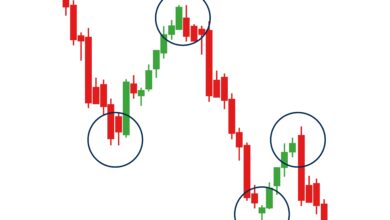What Is Risk Management?
Risk Management in Forex Trading: Protecting Capital and Ensuring Long-Term Success
Introduction:
Forex trading offers lucrative opportunities for investors, but it also exposes them to inherent risks. In the dynamic and volatile currency markets, risk management plays a crucial role in preserving capital and ensuring long-term success. This article aims to provide a professional guide to understanding risk management in forex trading
1. Defining Risk Management in Forex Trading:
Risk management in forex trading refers to the strategic process of identifying, assessing, and mitigating potential risks to protect trading capital. It involves implementing effective techniques and tools to minimize losses and maintain a disciplined approach to trading.
2. Risk Assessment and Tolerance:
Before engaging in forex trading, it is essential to assess personal risk tolerance. Traders must evaluate their financial circumstances, trading experience, and emotional resilience to determine the level of risk they can comfortably withstand. By understanding their risk tolerance, traders can establish appropriate risk management strategies aligned with their individual preferences.
3. Position Sizing and Lot Sizes:
Proper position sizing is a critical aspect of risk management. Traders must calculate the position size based on their risk tolerance, account size, and the specific trade setup. Lot sizes, representing the volume of currency traded, should be determined to limit potential losses within acceptable limits, typically a percentage of the trading account balance.
4. Utilizing Stop Loss Orders:
Stop loss orders are essential risk management tools in forex trading. These orders are placed at predetermined price levels to automatically close a trade if the market moves unfavorably. By setting appropriate stop loss levels based on technical analysis and risk tolerance, traders can limit potential losses and protect their capital.
5. Implementing Take Profit Orders:
In addition to stop loss orders, take profit orders help secure profits by automatically closing a trade at a predetermined price level when the market moves favorably. Take profit orders enable traders to lock in gains and ensure disciplined risk management. Setting appropriate take profit levels is crucial to capitalize on profitable trades while maintaining a strategic approach.
6. Evaluating Risk-Reward Ratio:
The risk-reward ratio is a fundamental concept in risk management. It compares the potential profit of a trade to the potential loss. Traders should aim for a favorable risk-reward ratio, where the potential reward outweighs the potential risk. By consistently maintaining a positive risk-reward ratio, traders can achieve long-term profitability, even with a lower win rate.
7. Diversification for Risk Mitigation:
Diversification is a powerful risk management strategy. Instead of focusing solely on a single currency pair, traders can spread their risk across multiple pairs or different asset classes. Diversification helps reduce the impact of adverse movements in a single position and can enhance overall portfolio stability. Careful consideration of correlated and uncorrelated assets is vital when implementing diversification strategies.
8. Regular Review and Adjustment:
Risk management is an ongoing process that requires regular review and adjustment. Traders should periodically evaluate the effectiveness of their risk management strategies, considering changes in market conditions, personal circumstances, and trading performance. Adjustments should be made accordingly to ensure that risk management techniques remain aligned with evolving market dynamics.
Conclusion:
Risk management is an integral part of forex trading, ensuring the protection of capital and laying the foundation for long-term success. By understanding risk tolerance, implementing appropriate position sizing, utilizing stop loss and take profit orders, maintaining a favorable risk-reward ratio, diversifying positions, and regularly reviewing and adjusting strategies, traders can effectively manage risks in the dynamic forex market. Prioritizing risk management alongside trading strategies, continuous education, and adapting approaches as needed are essential for navigating the challenging landscape of forex trading successfully.






